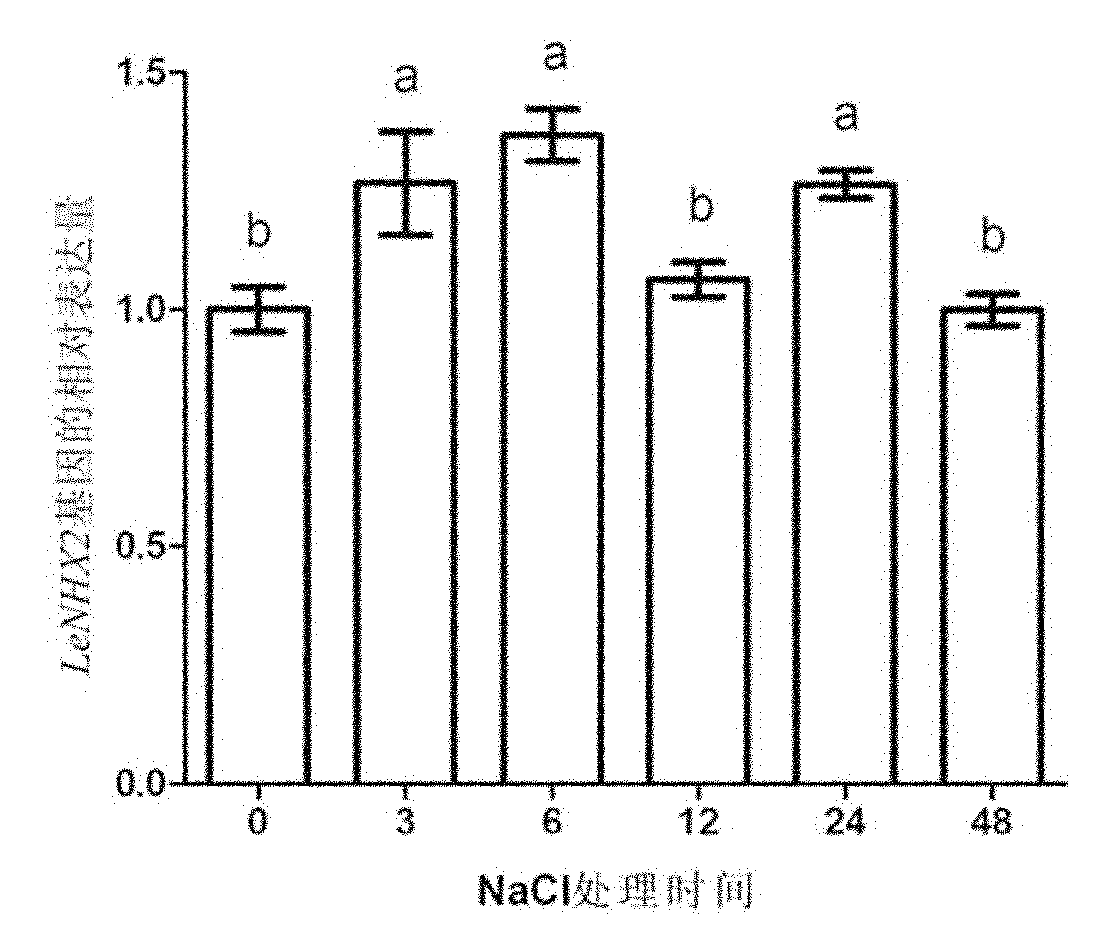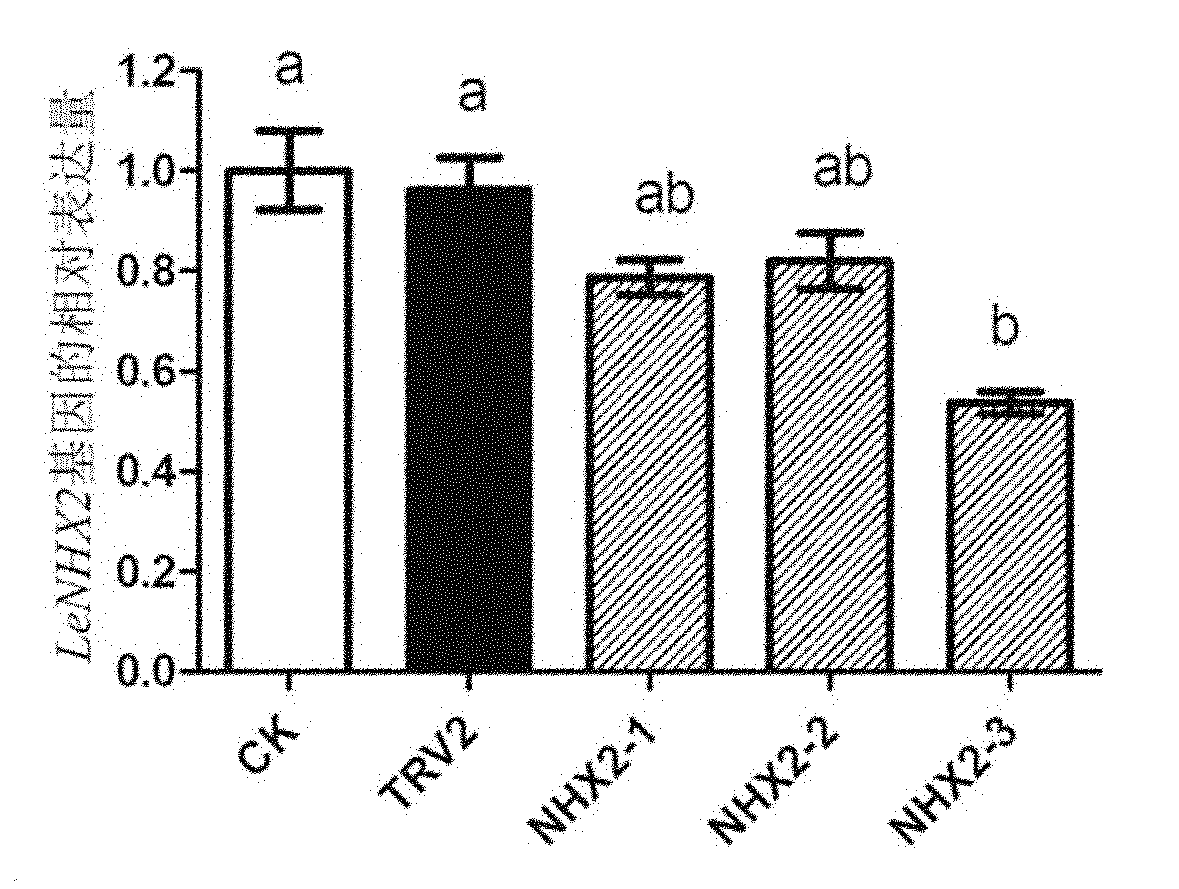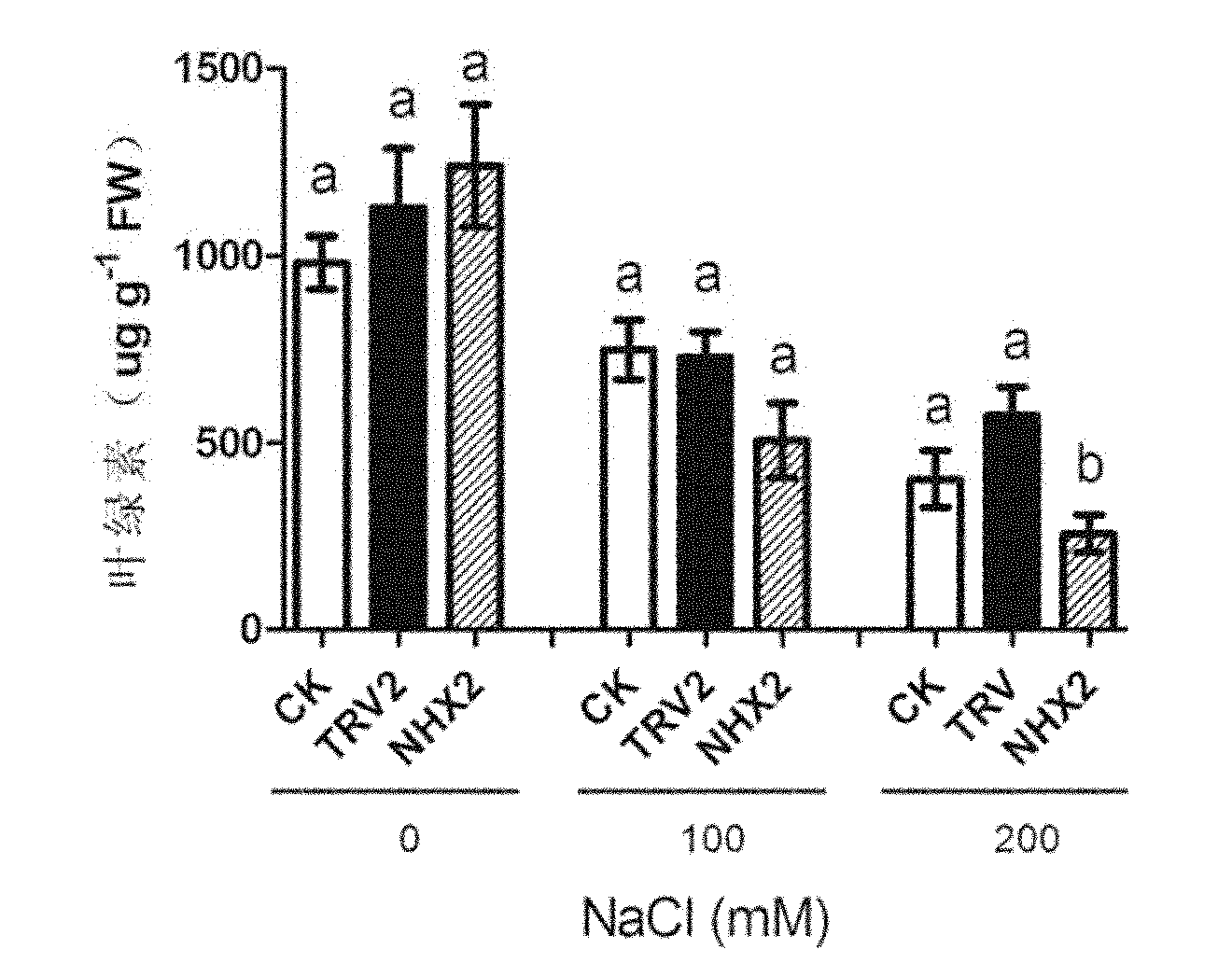Method for identifying salt resisting function of gene
A functional and gene silencing technology, applied in the biological field, can solve the problem of lack of salt stress-related genes in plants, limited and other problems, and achieve the effect of accurate identification results.
- Summary
- Abstract
- Description
- Claims
- Application Information
AI Technical Summary
Problems solved by technology
Method used
Image
Examples
Embodiment 1
[0042] Example 1. Silencing and detection of plant endogenous LeNHX2 gene related to salt resistance
[0043] 1. Identifying that the expression of LeNHX2 gene is regulated by NaCl
[0044] Take the 30-day-old tomato variety Lichun, and treat it with 200mM NaCl for 0, 3, 6, 12, 24, and 48 hours, then take the upper mature and fully expanded leaves of the tomato variety Lichun treated with NaCl at different times, and extract total RNA. , reverse-transcribed into cDNA, Actin was used as an internal reference, and LeNHX2-specific primers were used for Real-timequantitative PCR analysis, the results were as follows figure 1 shown. From figure 1 It can be seen that, compared with 0 hour without NaCl treatment, the expression of LeNHX2 gene increased under NaCl treatment and reached the highest at 6 hours. This result indicated that the LeNHX2 gene was involved in the response of plants to salt stress.
[0045] 2. Identification of the function of LeNHX2 gene by virus-induced g...
PUM
 Login to View More
Login to View More Abstract
Description
Claims
Application Information
 Login to View More
Login to View More - R&D
- Intellectual Property
- Life Sciences
- Materials
- Tech Scout
- Unparalleled Data Quality
- Higher Quality Content
- 60% Fewer Hallucinations
Browse by: Latest US Patents, China's latest patents, Technical Efficacy Thesaurus, Application Domain, Technology Topic, Popular Technical Reports.
© 2025 PatSnap. All rights reserved.Legal|Privacy policy|Modern Slavery Act Transparency Statement|Sitemap|About US| Contact US: help@patsnap.com



